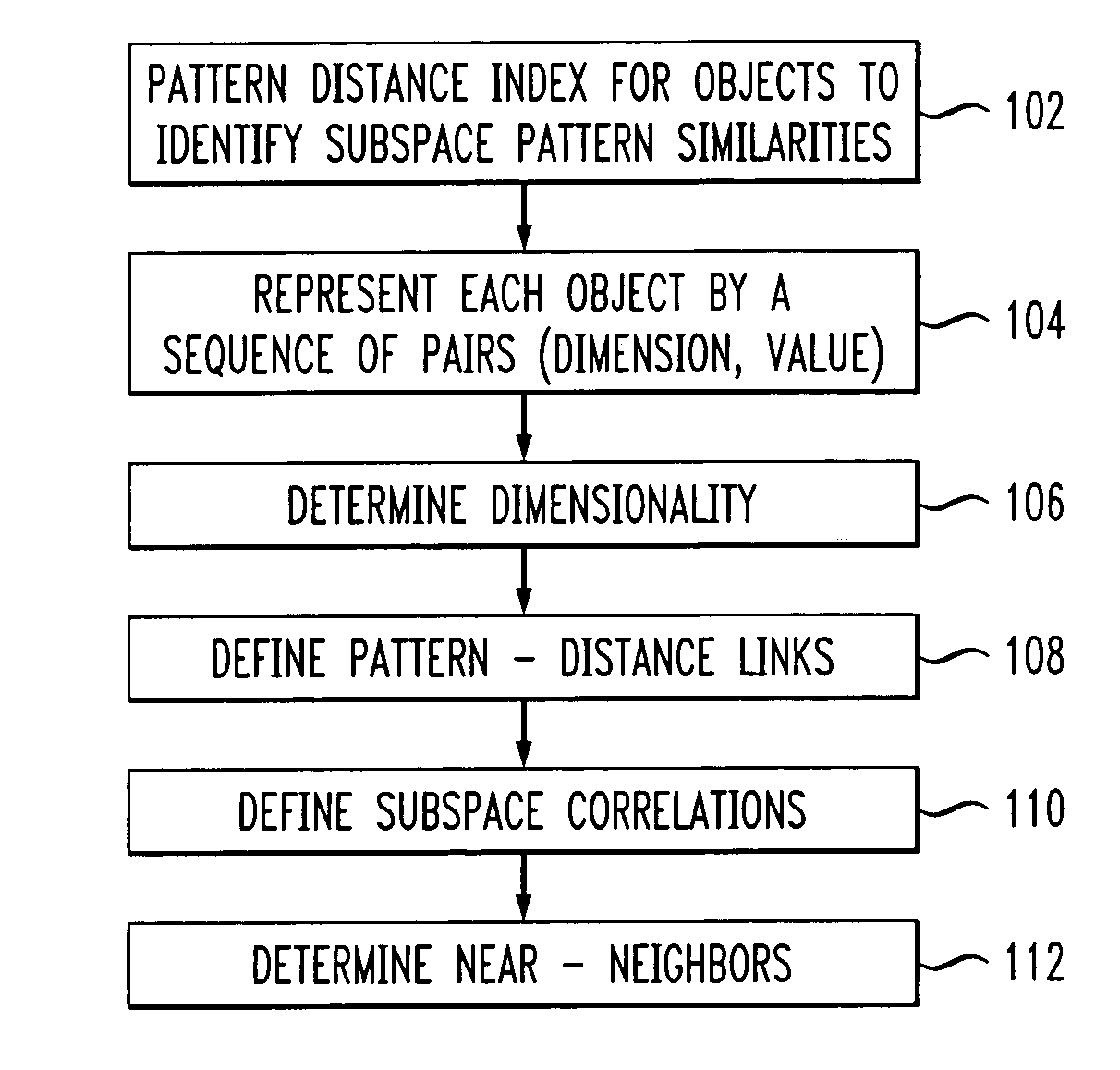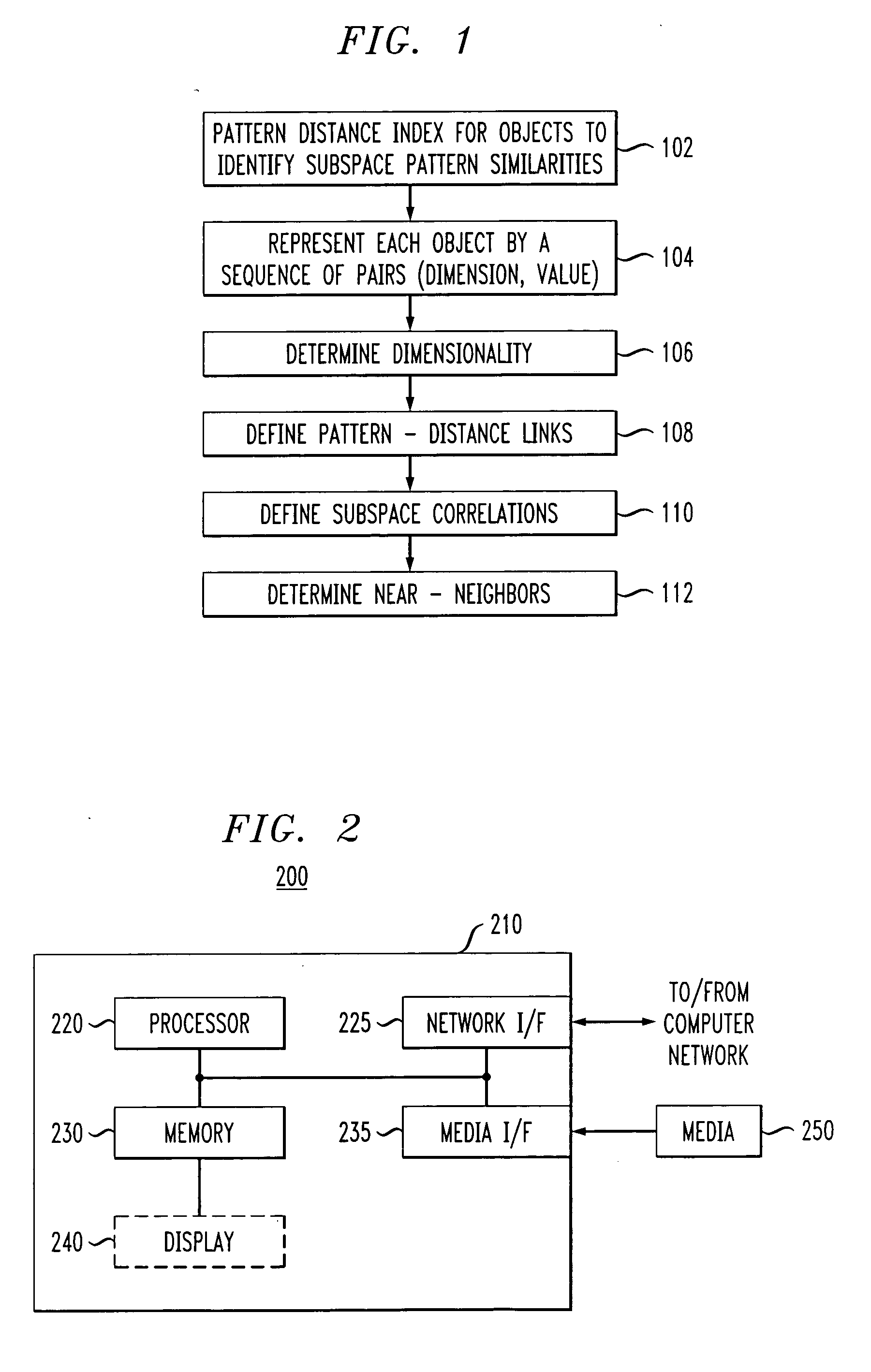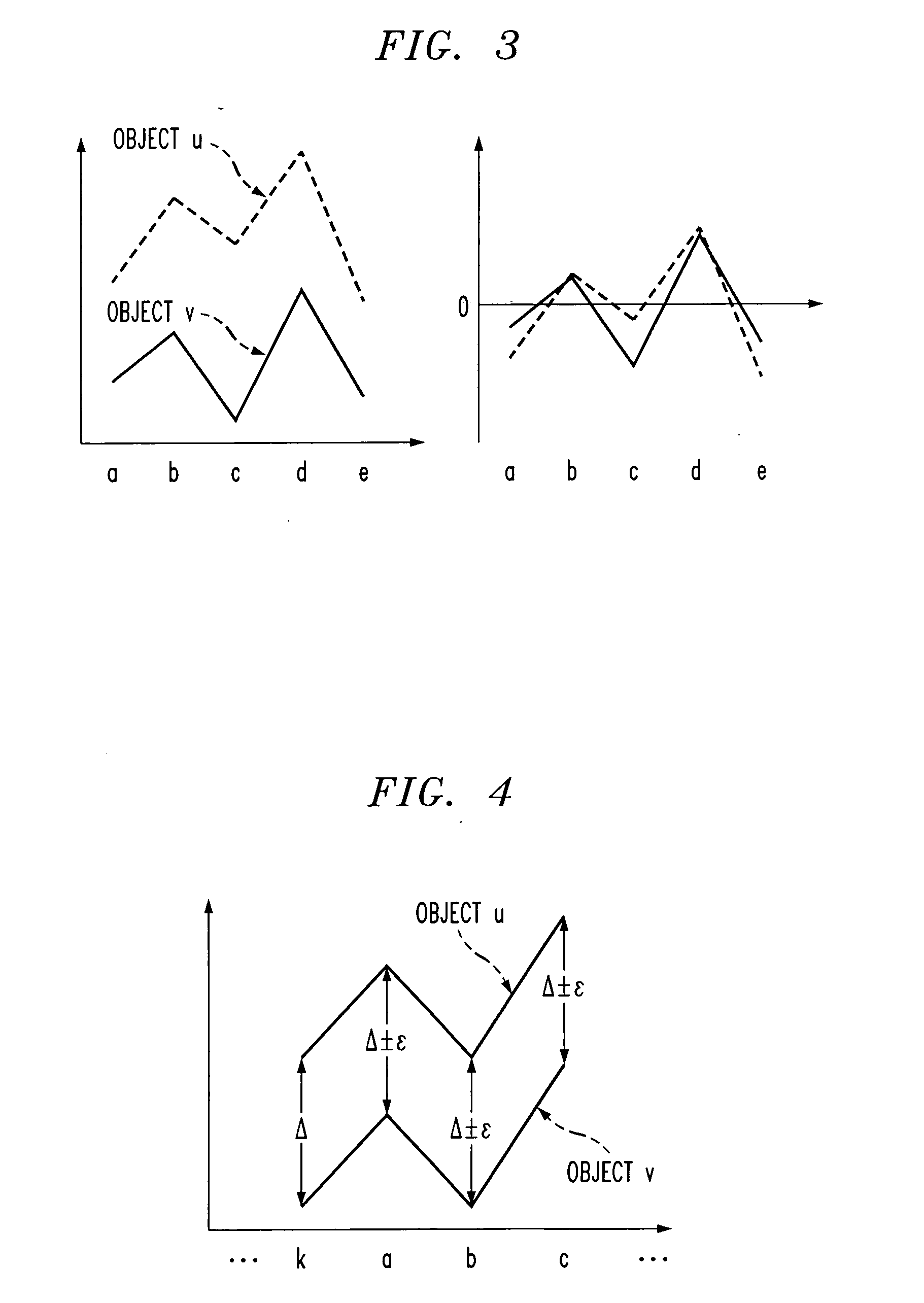Near-neighbor search in pattern distance spaces
a distance space and pattern technology, applied in the field of similarity searching techniques, can solve the problems of inability to find near-neighbors clearly, and inability to find near-neighbors,
- Summary
- Abstract
- Description
- Claims
- Application Information
AI Technical Summary
Benefits of technology
Problems solved by technology
Method used
Image
Examples
examples
[0108] The PD-Index was tested with both synthetic and real life data sets on a Linux machine with a 700 megahertz (MHz) central processing unit (CPU) and 256 megabyte (MB) main memory.
[0109] Gene expression data are generated by DNA chips and other micro-array techniques. The data set is presented as a matrix. Each row corresponds to a gene and each column represents a condition under which the gene is developed. Each entry represents the relative abundance of the messenger ribonucleic acid (mRNA) of a gene under a specific condition. The yeast micro-array is a 2,884×17 matrix (i.e., 2,884 genes under 17 conditions). The mouse chromosomal-DNA (cDNA) array is a 10,934×49 matrix (i.e., 10,934 genes under 49 conditions) and is pre-processed in the same way.
[0110] Synthetic data are obtained wherein random integers are generated from a uniform distribution in the range of 1 to ξ. |D| represents the number of objects in the dataset and |A| the number of dimensions. The total data size...
PUM
 Login to View More
Login to View More Abstract
Description
Claims
Application Information
 Login to View More
Login to View More - R&D
- Intellectual Property
- Life Sciences
- Materials
- Tech Scout
- Unparalleled Data Quality
- Higher Quality Content
- 60% Fewer Hallucinations
Browse by: Latest US Patents, China's latest patents, Technical Efficacy Thesaurus, Application Domain, Technology Topic, Popular Technical Reports.
© 2025 PatSnap. All rights reserved.Legal|Privacy policy|Modern Slavery Act Transparency Statement|Sitemap|About US| Contact US: help@patsnap.com



